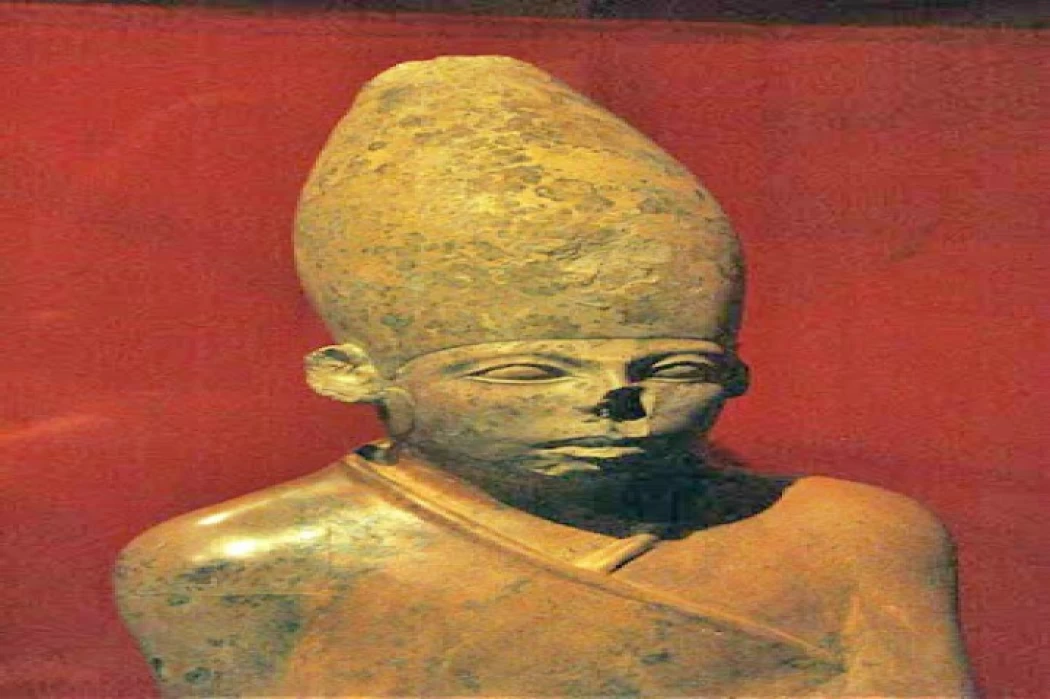
King Peribsen | 2nd Dynasty Kings of Egypt
King Peribsen
The name of this pharaoh is not present in any of the lists of kings that have come to the present day but has been found on several monuments. At Umm el Kaab, Petrie discovered two tombs at the opposite ends of the dynastic necropolis, one very small belonging to Peribsen, and the other of an exceptionally elongated shape to a king Khasekhemuy.
Peribsen's serekh has an unusual feature of being surmounted by Seth's animal, rather than the usual Horus hawk. In the tomb of Peribsen seals of jars of a certain Horo Sekhemyeb were found and at first, it was assumed that this was the name of Horo of Peribsen himself, even if this conjecture was contradicted by the presence of God Seth on the serekh of most seals and two beautiful granite steles placed in front of the burial chamber.
2nd Dynasty Kings of Egypt
A subsequent excavation not far from the tomb brought back the name of a king Sekhemyeb Perenmae and it was believed then that it was a predecessor of Peribsen; later the same full name was found on fragments from the Step Pyramid. Grdseloff's hypothesis that Sekhemyeb Perenmae is none other than Peribsen before betraying Horus to become a fervent devotee of Seth is very likely.
He was interred at Abydos, the site of the discovery of a seal inscription that included the first fully composed hieroglyphic sentence.
Latest Articles
Admin
Seabourn Sojourn Cruise Stops in Safaga Port
The Seabourn Sojourn, the flagship vessel of Seabourn Cruise Line's ultra-luxury fleet, was built in 2008 at the T. Mariotti shipyard in Genoa, Italy. Measuring 198 metres, it can accommodate up to 450 guests in its 225 spacious all-suite staterooms.
Admin
Norwegian Sky Cruise Stops in Safaga Port
Norwegian Cruise Line operates a cruise ship called the Norwegian Sky. It was constructed in 1999 and can accommodate 2,004 passengers in addition to 878 crew members. The ship has several dining establishments, lounges and bars, a spa and fitness center, swimming pools, and a number of entertainment areas.
Admin
Explora II Cruise Stops in Safaga Port
Explora II, the second vessel in the Explora Journeys fleet, sets sail in 2024 to redefine luxury cruising. With 461 ocean-front suites, 9 culinary experiences, and 4 pools, this haven of sophistication and sustainability promises an unforgettable "Ocean State of Mind" journey to inspiring destinations.
Admin
Mein Schiff 6 Cruise Stops in Safaga Port
The Mein Schiff 6 is the latest cruise ship in the renowned TUI Cruises fleet, offering passengers a luxurious and sophisticated cruise experience. At 315 metres long, this floating resort features a range of dining options, entertainment, and recreational facilities, including a spa, fitness centre, and sports amenities.
Admin
Mein Schiff 4 Cruise Stops in Safaga Port
When the Mein Schiff 4 cruise ship docks in Safaga, Egypt, passengers are granted access to a realm of ancient wonders. Aboard this state-of-the-art vessel, guests can embark on meticulously curated shore excursions that showcase the region's most iconic landmarks, including the Giza Pyramids, the enigmatic Sphinx, and the remarkable tombs and temples of the Valley of the Kings in Luxor.
Admin
MS Europa Cruise Stops in Safaga Port
The Silver Moon, Silversea's latest flagship, is a luxury cruise ship that offers an exceptional travel experience for Venezuelans exploring Egypt. With a capacity of 596 guests and an impressive 40,700 gross tonnes, the Silver Moon maintains the small-ship intimacy and spacious all-suite accommodations that are the hallmarks of the Silversea brand.













